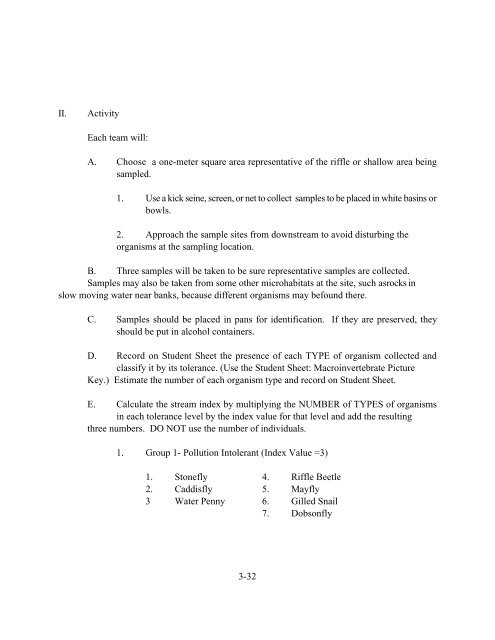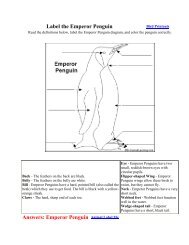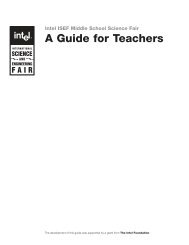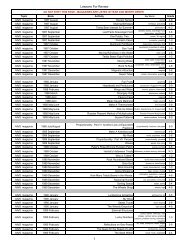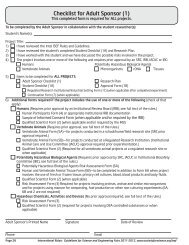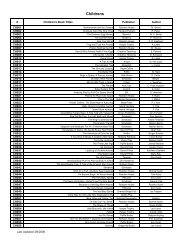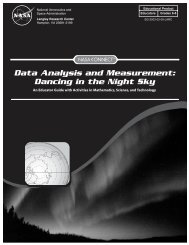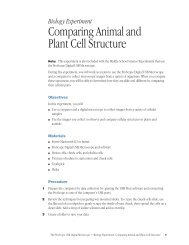BIOGRAPHY OF A RIVER
BIOGRAPHY OF A RIVER
BIOGRAPHY OF A RIVER
Create successful ePaper yourself
Turn your PDF publications into a flip-book with our unique Google optimized e-Paper software.
II.ActivityEach team will:A. Choose a one-meter square area representative of the riffle or shallow area beingsampled.1. Use a kick seine, screen, or net to collect samples to be placed in white basins orbowls.2. Approach the sample sites from downstream to avoid disturbing theorganisms at the sampling location.B. Three samples will be taken to be sure representative samples are collected.Samples may also be taken from some other microhabitats at the site, such asrocks inslow moving water near banks, because different organisms may befound there.C. Samples should be placed in pans for identification. If they are preserved, theyshould be put in alcohol containers.D. Record on Student Sheet the presence of each TYPE of organism collected andclassify it by its tolerance. (Use the Student Sheet: Macroinvertebrate PictureKey.) Estimate the number of each organism type and record on Student Sheet.E. Calculate the stream index by multiplying the NUMBER of TYPES of organismsin each tolerance level by the index value for that level and add the resultingthree numbers. DO NOT use the number of individuals.1. Group 1- Pollution Intolerant (Index Value =3)1. Stonefly 4. Riffle Beetle2. Caddisfly 5. Mayfly3 Water Penny 6. Gilled Snail7. Dobsonfly3-32


